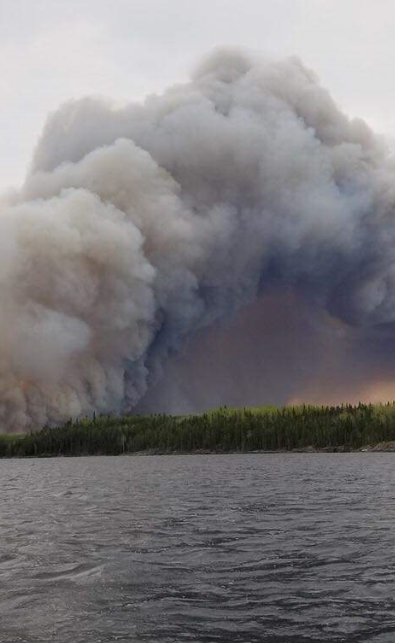THUNDER BAY -- A wildfire that forced the evacuation of more than 1,600 people from Pikangikum First Nation has again blanketed the community with heavy smoke, though Mother Nature could soon provide an assist to fire supression efforts.
Red Lake 14, which has been burning mere kilometres from the remote Northwestern Ontario Indigenous community, continues to be fought by Ministry of Natural Resources and Forestry firefighters and remains not under control at a size of more than 3,800 hectares.
Chris Marchand, a fire information officer with the Ministry of Natural Resources and Forestry, said on Friday hot temperatures, low humidity and gusty winds led a pick up in the fire's intensity.
Help could from the weather could come as early as Saturday, with up to 20 millimetres of rain in the forecast.
"It will certainly be welcome to the supression effort," Marchand said.
"It's been a variable week. The first half of the week we saw some low fire behaviour which really let crews focus on consolidating their hose lines around the fire's perimeter to prevent further spread. With this increase in fire behaviour, they're really looking to identify hot spots using infrared scanning and to extinguish those hot spots so that as the fire behaviour conditions escalate that nothing re-emerges along that perimeter."
Kyle Peters, Pikangikum First Nation's education director and community liaison in Thunder Bay, said the community had largely been free of smoke for the last couple of days before southeast winds on Friday blew smoke back into the community .
"I don't anticipate very soon," Peters said when asked about when he expected community members would be able to return home.
About 350 community members are currently being hosted in Thunder Bay, with the number expanding throughout the week as families that had been separated during the initial evacuation are being reconnected. An additional 37 people are expected to arrive in the city later Friday. As of Wednesday, more than 1,600 people had been flown out of the community of 3,300, with Sioux Lookout, Kapuskasing, Timmins, Hearst and Cochrane also serving as host communities.
The first evacuees, the community's most vulnerable -- including elderly, children and those with medical needs -- arrived in Thunder Bay more than a week ago aboard three military aircraft flights.
"I think they're adjusted and have gotten comfortable over the last few days, as they didn't have a liaison for the first couple of days they were here," Peters said. "We've slowly been getting activities set up for them all around the community. I'm grateful for the Thunder Bay community for allowing us to host activities at some of their sites."
Those activities include bannock making, which was organized at the request of elders, done in collaboration with a local school.
